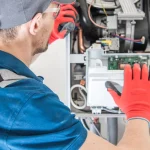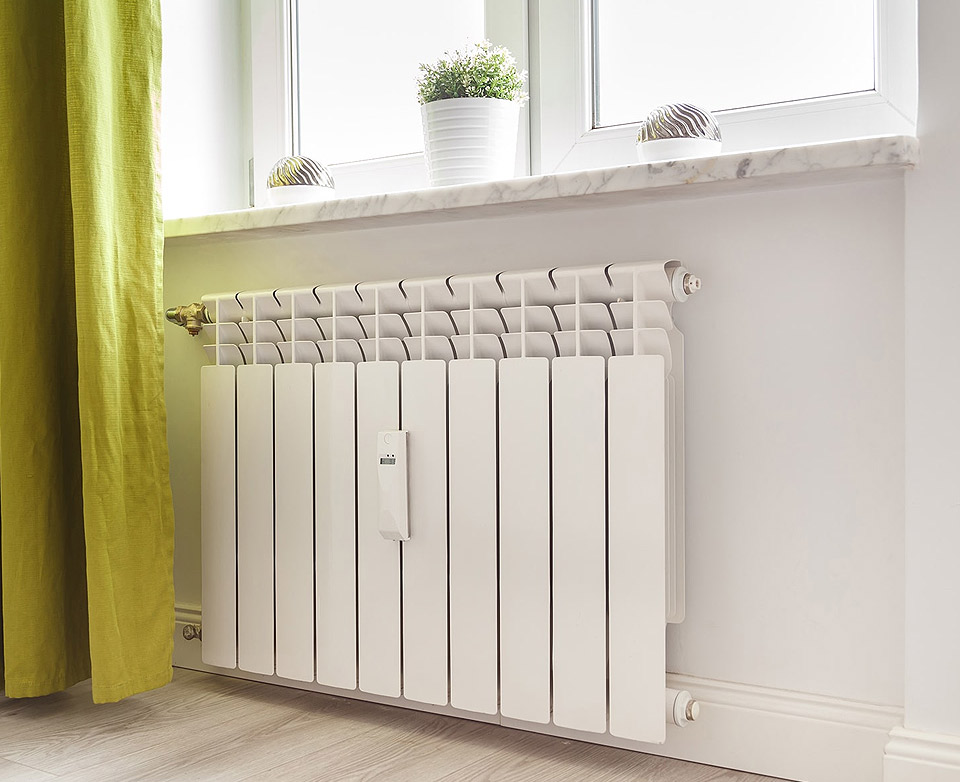25 Sep
The Emergency Heat Switch on Heat Pumps — What is It and How Does It Work
The emergency heat switch on a heat pump, often referred to as “auxiliary heat” or “backup heat,” is a crucial component of the system that helps maintain comfortable indoor temperatures during extremely cold weather conditions or when the primary heat pump isn’t functioning optimally. To understand how it works, let’s break down its purpose and operation:
Purpose:
- Efficiency: Heat pumps are highly efficient heating and cooling systems, primarily relying on transferring heat from the outside environment into your home during the heating season. However, as outdoor temperatures drop significantly, the heat pump’s efficiency decreases.
- Supplemental Heating: In very cold weather, the heat pump may struggle to extract enough heat from the outdoor air to maintain your desired indoor temperature. This is where the emergency heat or auxiliary heat comes into play.
How it Works:
- Primary Heat Source: Under normal operating conditions, the heat pump serves as the primary heat source. It uses a refrigeration cycle to extract heat from the outside air and transfer it into your home. This process is efficient but becomes less effective as the outdoor temperature drops.
- Emergency Heat Source: The emergency heat system typically consists of electric resistance heating elements or a gas furnace (depending on your specific heat pump system). These heating elements are capable of producing a substantial amount of heat quickly, making them ideal for extreme cold conditions.
- Switching to Emergency Heat: When you turn on the emergency heat switch, you’re telling your heat pump to stop trying to extract heat from the outdoor air and instead rely solely on the backup heat source. This can be necessary when the heat pump is struggling to meet the heating demand, and the backup heat provides a more reliable and immediate source of warmth.
- Energy Efficiency Consideration: It’s important to note that while emergency heat is effective in maintaining indoor comfort in extreme cold, it is generally less energy-efficient than the heat pump itself. Electric resistance heating, in particular, can be expensive to operate. Therefore, it’s best to use emergency heat sparingly and revert to the heat pump when outdoor temperatures rise or the primary system is functioning correctly again.
When to Use Emergency Heat:
- Use the emergency heat mode when the heat pump is not providing adequate warmth during extremely cold weather.
- If there’s a malfunction or issue with your heat pump, switching to emergency heat can be a temporary solution while you address the problem.
Important Considerations:
- Be cautious about using emergency heat for extended periods, as it can significantly increase your energy bills.
- Consult your system’s user manual or seek guidance from a professional HVAC technician for specific instructions on using the emergency heat feature, as its operation may vary between different heat pump models.
In summary, the emergency heat switch on a heat pump is a backup heating system that’s designed to provide heat in extreme cold conditions or when the primary heat pump is not functioning optimally. It’s essential to use it judiciously to balance comfort and energy efficiency.










